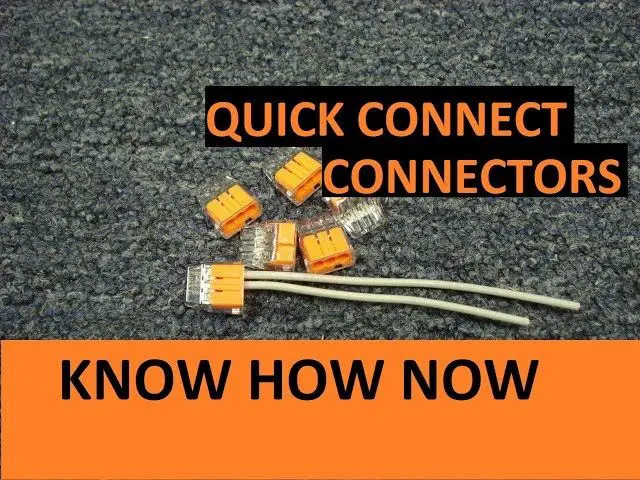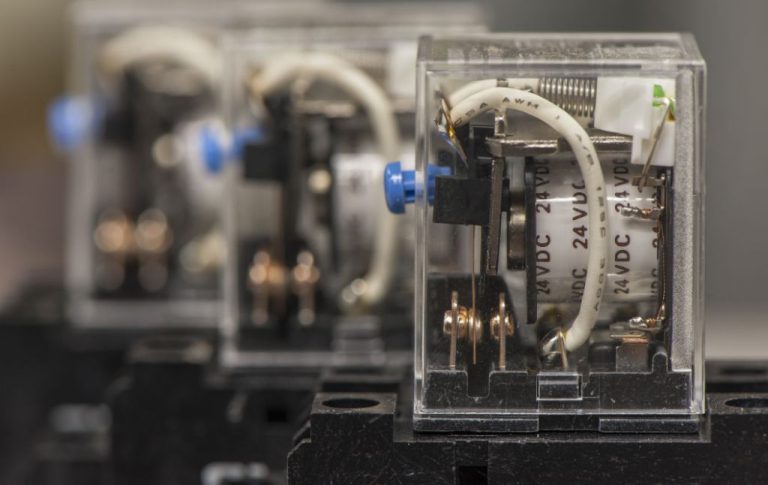What Is Better Than A Wire Nut?
A wire nut is a small plastic cap used by electricians to join two or more electrical wires together (https://www.yourdictionary.com/wire-nut). Wire nuts have a conductive metal interior and an insulating plastic exterior. They work by twisting the wire nut onto the ends of exposed wires, which are inserted into the conductive metal cavity. The twisting motion joins the wires both mechanically and electrically.
Wire nuts serve as an inexpensive and quick way to create safe and secure connections between electrical wires in homes, businesses, and other locations. They eliminate the need to solder connections or use more complex terminal blocks. The plastic insulation creates a waterproof and corrosion resistant connection that protects against shorts, shocks and fires. Wire nuts come in a variety of sizes to accommodate different gauges of wire.
Twist-on Connectors
Twist-on connectors, also known as wing nuts or spring wire connectors, are a popular alternative to traditional wire nuts. They provide a faster and more compact connection between two or more wires. Twist-on connectors work by using internal spring tension to hold the wires together, eliminating the need to twist the wires by hand as you would with a wire nut.
According to a Reddit thread, twist-on connectors are generally quicker to install than wire nuts, making wiring jobs faster. The springs inside tightly clamp down on the wires for a secure connection. Additionally, twist-on connectors have a smaller profile than standard wire nuts, which allows them to fit into tighter spaces.
However, traditional wire nuts are still more commonly used in many applications. But for situations where speed and compact size are beneficial, twist-on connectors present a viable alternative to wire nuts.
Push-in Connectors
Push-in connectors like Wago connectors are a more modern alternative to wire nuts that are also code compliant (Ideal Industries). These “wire connector quick connects” offer a number of advantages over traditional twist-on wire connectors:

Push-in connectors don’t require twisting the wires together. You simply insert the stripped wire end into the connector and it automatically makes contact through spring pressure or levers (Amazon). This can make installations much quicker and easier, especially in tight spaces.
They are available in a wide variety of sizes to accommodate different wire gauges. Many feature multiple ports to connect 3, 4, 5 or more wires which is perfect for splicing lighting, fans, switches etc (Ideal Industries).
The connectors are transparent so you can easily check all the wire connections with a quick glance (Amazon). The see-through housing gives a visual verification that the wires are fully inserted and making solid contact.
Most push-in connectors are pre-filled with sealant gel that forms a watertight connection without the need to add twist-on wire nut caps (Ideal Industries). They prevent moisture and corrosive materials from reaching the bare wire.
Overall, push-in connectors like Wago are a code-approved alternative to regular twist-on wire nuts. Their spring-loaded design allows for quick no-twist installations while the transparent housing lets you visually inspect the connections. The built-in sealant gel also helps prevent corrosion.
Terminal Blocks
Terminal blocks and terminal strips are more permanent and robust connector options compared to wire nuts. They allow wires to be securely clamped and held in place by screwing them into a metal block. This creates a solid mechanical and electrical connection. According to the DIY Stack Exchange article “Why do electricians in some areas choose wire nuts over …,” terminal blocks are considered “a more robust physical connection” than wire nuts. They are commonly used for connecting wiring in control panels and other permanent installations where vibration resistance is important.
Terminal blocks allow easy installation and removal of individual wires. Wires are inserted into the open end of the terminal and a screw clamp creates the connection. This provides more flexibility than wire nuts for changing wiring. However, according to a Homebrewer’s Association forum post, terminal blocks can be “much less safe because they’re so hard to screw down properly.” Proper installation is important to ensure a tight connection.
Butt Splices
Butt splices involve joining two wires end-to-end inside a single sleeve or housing. The wires are inserted into both ends of the sleeve and make contact in the middle. The sleeve is then crimped with a special tool to hold the wires firmly in place (School me on connectors).
Butt splices with an insulating sleeve are ideal for joining wires that run in a continuous line. The smooth sleeve allows the wires to pass through holes and conduits without snagging. Butt splices also take up very little space since there is no branching off or twisting of wires. They provide a clean inline connection (Wire nuts vs Butt crimps / Terminal blocks).
However, butt splices are more time consuming to install compared to twist-on wire connectors. They require the proper crimping tool to ensure a solid connection. Overall, butt splices are an excellent choice when joining wires in a tight space or running in a continuous line.
Lever Nuts
Lever nuts are an alternative type of twist-on connector that provide tighter connections through the use of levers. Instead of twisting the connector to tighten it, lever nuts use levers that clamp down and hold wires securely in place. According to WAGO, lever nuts enable quick installation of high-power devices and are ideal for connecting solid and stranded wires from 24 to 12 AWG.
Unlike traditional twist-on wire nuts which rely on friction, the levers on lever nuts provide excellent electrical contact by wedging wires together. This makes lever nuts less prone to loosening over time. The lever mechanism also allows for easy removal if reworking a connection. Many electricians prefer lever nuts because the levers provide visual confirmation that a tight connection has been made.
Overall, lever nuts are an alternative to wire nuts that offer tighter connections and ease of use through their lever design. Their ability to securely join wires of varying sizes makes them a versatile option for many electrical projects.
Insulated Terminal Connectors
Insulated terminal connectors are a great option for protecting exposed wire connections from shorts and corrosion. They consist of a metal terminal barrel crimped or screwed onto the stripped wire, with a plastic insulating cover that slides overtop. The insulating cover fully encloses the metal connection, providing a weatherproof and shockproof connection (Qibaok).
Insulated terminal connectors come in a wide range of wire gauge sizes, typically 10 AWG to 22 AWG. This makes them suitable for most general automotive, marine, RV, and electrical projects (Wiring Depot). The plastic insulation is color coded for easy wire size identification. Heat shrink and pre-insulated terminals are also available.
Compared to basic splice connectors, insulated terminals offer a more streamlined profile and enhanced insulation. The closed plastic cover protects against accidental shorts. Insulated terminals also tend to be more durable and vibration resistant. Overall, they provide a safe and professional connection for exposed wiring applications.
Push Wire Connectors
A newer type of connector that has gained popularity are push wire connectors. As the name implies, these allow wires to be pushed directly into the connector without needing to be stripped or prepped beforehand. The connector contains a sharp metal point that pierces through the wire’s insulation and makes contact with the inner conductor when inserted.
Push wire connectors are designed to be extremely quick and easy to use. Wires can be pushed in with just hand pressure, without requiring any tools. This makes connections much faster compared to having to strip wires and twist them together with a nut. Electricians and DIYers love push wire connectors for their speed and simplicity.
Most push wire connectors have built-in strain relief and are made of durable plastic housings. They are available in various sizes and wire gauges. The open side design also allows for easy inspection and troubleshooting compared to an enclosed twist-on connector. Overall, push wire connectors are a fast and reliable option perfect for simple splices and junctions.
Safety Considerations
When working with any type of wire connector, following basic safety practices is crucial for preventing electrical hazards and injuries. According to The Family Handyman, it’s important to choose the proper size connector for the gauge and number of wires being joined. The connector should fit snugly on the wires with all wire ends touching at the base. Twisted wires should be straightened before inserting into the connector. Apply firm pressure and tight clockwise turns when securing the connector to form a tight connection.
Per Durham Electrical Services, loose connections can spark and arc, creating a fire risk. Follow the manufacturer’s directions for proper use and insulate connections with electrical tape. Avoid overfilling connectors. Test connections to ensure wires are fully engaged. Periodically check connections to make sure they haven’t worked loose over time. Keep flammable materials away from live wires and connectors. Use caution and turn off power when working with electrical connections.
Conclusion
There are several different options that can work better than standard wire nuts depending on the specific application and needs. Each has their own advantages and limitations that should be considered.
Twist-on connectors are the simplest and most common alternative to wire nuts, good for basic home wiring jobs. Push-in connectors provide faster installation but lower reliability at high loads. Terminal blocks enable easy system changes and maintenance for commercial applications. Butt splices and lever nuts offer greater strength and corrosion resistance for harsh environments.
Insulated terminal connectors and push wire connectors provide added safety and convenience for DIY jobs. Overall, wire nuts are a tried-and-tested connector suitable for most basic applications, but other options can deliver specific benefits for more demanding electrical work.




